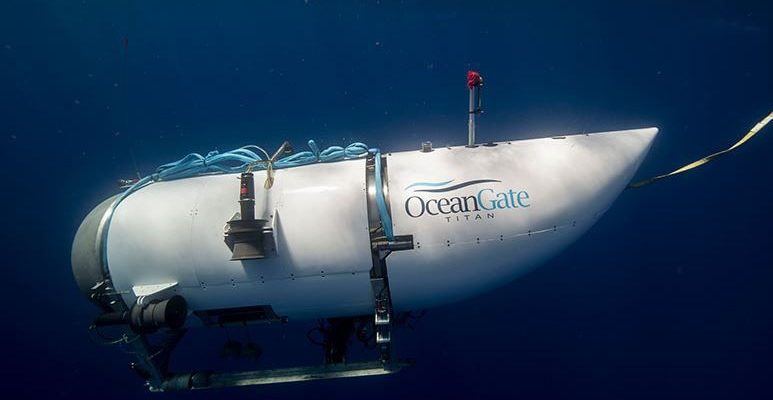The race against time continues. Already five days since the submarine Titan, who went on an expedition to the wreck of the Titanic, disappeared at sea with five passengers on board. American, Canadian and French forces probe the North Atlantic in search of the small submersible of the company OceanGates Expeditions. But time is running out: there is not much oxygen left for the crew of the Titanonly enough to last until about Friday.
British billionaire Hamish Harding, Pakistani tycoon Shahzada Dawood and his son Suleman had all paid $250,000 to visit the wreckage of the titanic, sunk in 1912. They were accompanied by the American boss of OceanGates Expeditions, Stockton Rush, and the French submariner Paul-Henri Nargeolet, known for his numerous expeditions to the site. Since Canadian planes picked up underwater noises on June 20, there is hope again. But research operations remain very dangerous.
A large search area for a small submarine
First, because the area to be excavated is of considerable width. It extends over 20,000 square kilometers in the Atlantic Ocean, with a depth of almost 4,000 meters. No clue – apart from the noises spotted on June 20 – makes it possible to locate the Titan : the submersible has lost all contact with its support vessel since June 18, less than two hours after its departure for the titanic from the US northeast coast.
The task is therefore colossal, especially since “the submarine is not very big”, comments for L’Express Christian Buchet, director of the Center for Sea Studies of the Catholic Institute of Paris. THE Titan measures just 6.5 meters long. “At nearly 3,800 meters deep, how do you spot a craft that is barely 6.5 meters?” adds Christian Buchet.
The small submarine is lost in the vastness of the ocean, which remains very mysterious for scientists. The seabed would be even less well known than the surface of Mars. They know however that the pressure is extremely strong there, and that it is impossible to see anything there. “Exploring the seabed is equivalent to exploring the Alps at night with an electric lamp”, illustrates Christian Buchet. Questioned on the American channel NBC News Now, the expert of the titanic Tim Maltin adds: “It’s pitch black down there. It’s freezing cold. The seabed is made up of mud and it’s wavy. You can’t see your hand in front of your face. It’s a bit like an astronaut who go to space.”
reasons to hope
Despite these extreme difficulties, Christian Buchet says he is “optimistic”. The noises detected by Canadian planes may suggest that these are “signs of life”, he believes. Added to this, “Paul-Henri Nargeolet is a great specialist, he probably had to take matters into his own hands, ration the air and control the situation”, adds Christian Buchet, who regularly visits the submariner.
To carry out the research, coordinated by the US Coast Guard, various devices were deployed. Two C-130 planes were first dispatched to the area. A third C-130 and three other C-17 transport planes were to be deployed Tuesday evening, the Pentagon said. The Canadian Coast Guard mobilized a ship, as did France, via the Research Institute for the Exploitation of the Sea (Ifremer). This last boat, called Atalante, carries the Victor 6000 robot, capable of traveling at a depth of 6000 meters. “The priority remains to locate the Titan“, summarizes Christian Buchet. “Then, it will have to be rescued, and the technique chosen will depend on the state of the submarine, its location and the way it is positioned.
Leaving Southampton on April 10, 1912 to reach New York, the titanic, the largest liner in the world at the time of its launch, sank after hitting an iceberg five days later. Of the 2,224 passengers and crew, nearly 1,500 perished. The wreck was discovered in 1985 650 kilometers off the Canadian coast, in the international waters of the Atlantic Ocean. Since then, maintaining the myth, treasure seekers and tourists have been visiting it.
